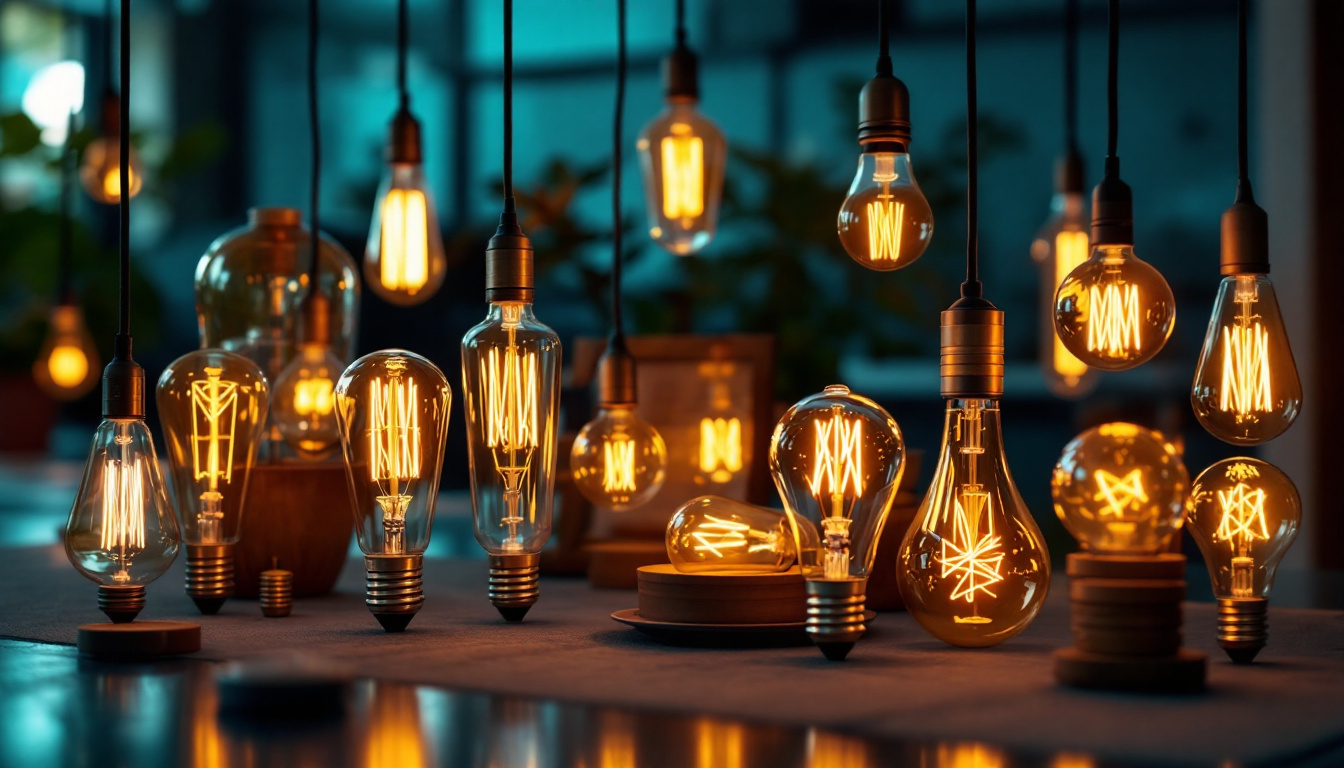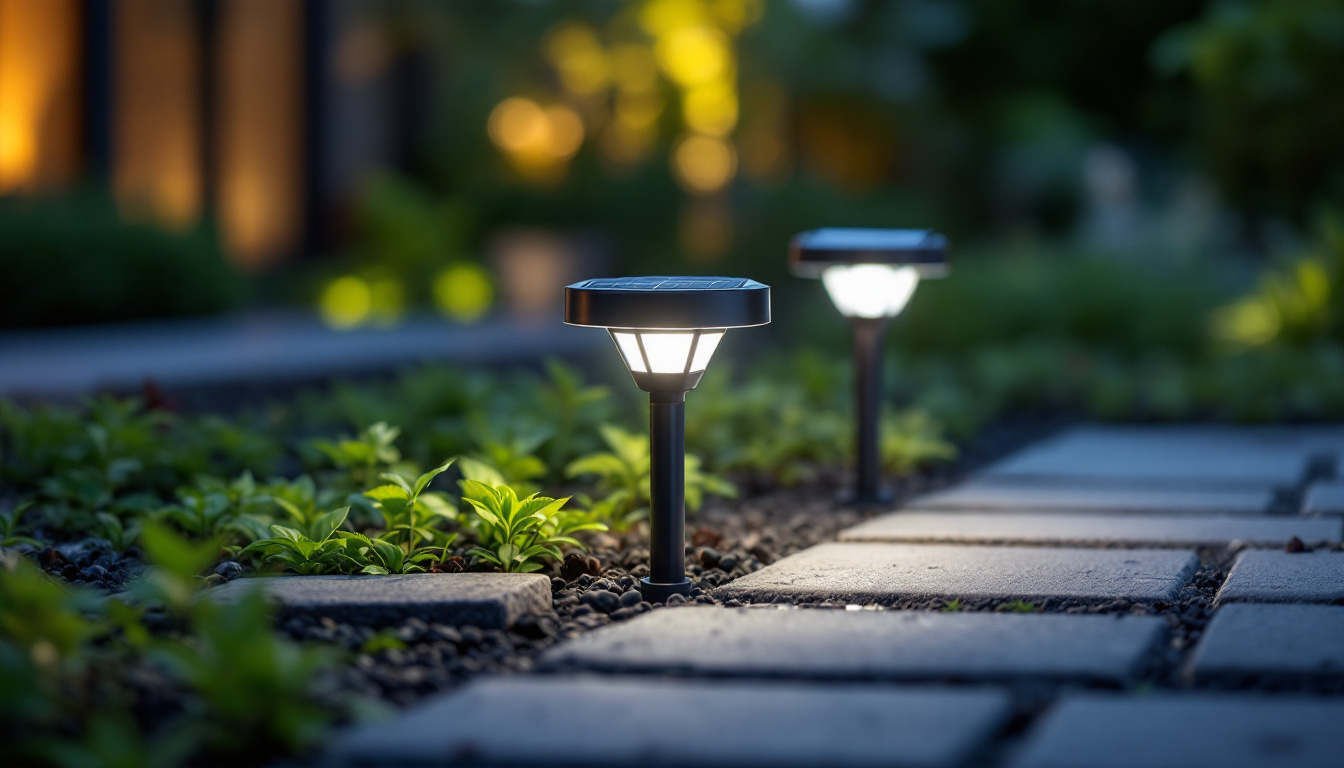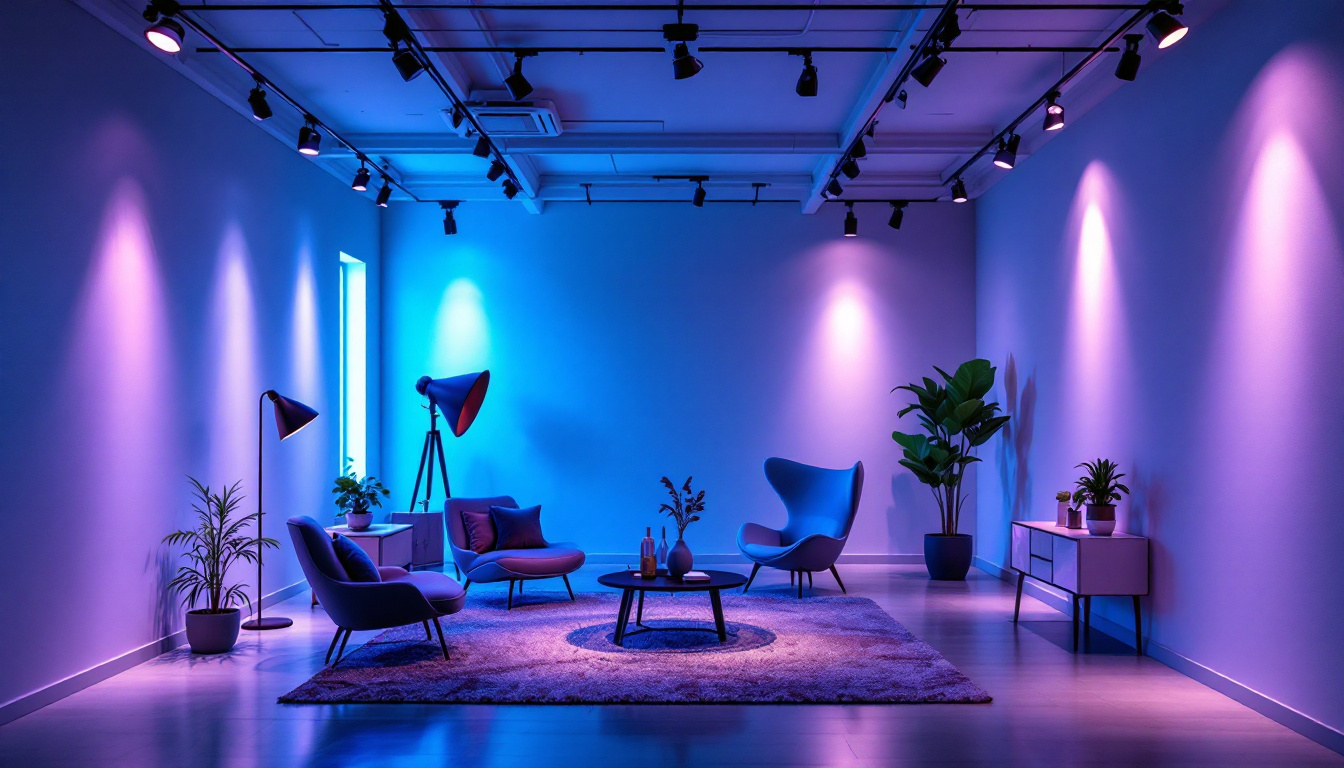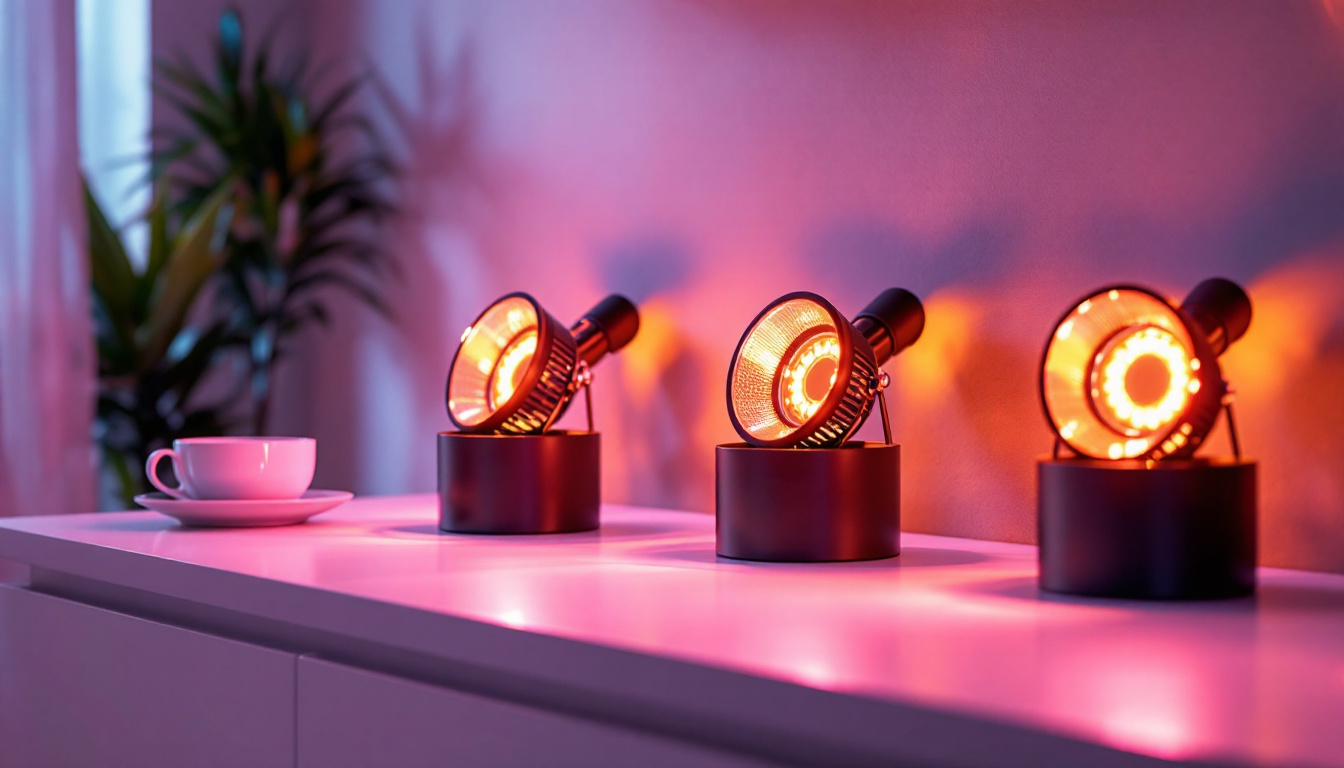

As the world of lighting continues to evolve, decorative light bulbs have emerged as a key component in both residential and commercial settings. Their aesthetic appeal, combined with advancements in technology, makes them a popular choice among contractors and designers alike. However, with the rapid pace of innovation, it is essential to consider how to future-proof lighting projects that incorporate these decorative elements.
Decorative light bulbs have come a long way from the traditional incandescent bulbs that dominated the market for decades. Today, options range from vintage-style Edison bulbs to modern LED designs that mimic the warmth and glow of their predecessors while offering superior energy efficiency. This evolution not only enhances the visual appeal of spaces but also aligns with sustainability goals. The shift towards more eco-friendly options has prompted manufacturers to innovate, leading to a wide array of designs that cater to diverse aesthetic preferences and functional needs. As a result, decorative lighting has become a focal point in interior design, capable of transforming an ordinary room into an extraordinary space.
When selecting decorative light bulbs, it is crucial to understand the various types available. Each type has its unique characteristics, advantages, and potential drawbacks. For instance, incandescent bulbs provide a warm light but are energy-intensive. In contrast, LED bulbs consume significantly less energy and have a longer lifespan, making them an attractive option for contractors looking to reduce operational costs. Moreover, the versatility of LED technology has led to the development of a range of shapes, colors, and designs, allowing for creative expression in lighting choices.
Other options include compact fluorescent lamps (CFLs) and halogen bulbs, each offering different benefits in terms of color temperature and brightness. CFLs are known for their energy efficiency and longer lifespan compared to traditional incandescent bulbs, while halogen bulbs provide bright, crisp light that enhances color rendering in spaces. By familiarizing oneself with these varieties, contractors can make informed decisions that align with both aesthetic and functional requirements. Understanding the nuances of each type can also aid in selecting the right bulb for specific applications, whether it be for ambient lighting, task lighting, or accent lighting.
Staying abreast of current trends in decorative lighting can help contractors anticipate client needs and preferences. For example, the rise of smart lighting systems has transformed the way decorative bulbs are integrated into design projects. These systems allow for customizable lighting schemes, enabling users to adjust brightness and color temperature via smartphone apps or voice commands. This level of control not only enhances convenience but also allows users to create the perfect atmosphere for any occasion, from cozy evenings to vibrant gatherings.
Additionally, the resurgence of retro and vintage designs has led to a demand for decorative bulbs that evoke nostalgia while incorporating modern technology. This trend has sparked a renewed interest in filament-style bulbs that blend the charm of yesteryears with the efficiency of contemporary lighting. Furthermore, the use of decorative bulbs in outdoor settings has gained popularity, with string lights and lantern-style fixtures becoming staples for patios and gardens, creating inviting spaces for relaxation and entertainment. Understanding these trends can provide contractors with a competitive edge in the market, allowing them to offer tailored solutions that resonate with their clients’ desires for both style and functionality.
As sustainability becomes a priority for both consumers and businesses, energy-efficient lighting solutions are increasingly in demand. Decorative light bulbs, particularly LEDs, play a significant role in reducing energy consumption and lowering carbon footprints. The shift towards energy-efficient lighting not only reflects a growing awareness of environmental issues but also aligns with economic benefits, as businesses and homeowners seek to reduce their utility bills while contributing to a greener planet.
LEDs have revolutionized the lighting industry, offering a range of decorative options that do not compromise on style. These bulbs consume up to 80% less energy than traditional incandescent bulbs and have a significantly longer lifespan, often lasting up to 25,000 hours. This longevity not only reduces waste but also minimizes maintenance costs for contractors and their clients. Furthermore, the durability of LEDs means they are less prone to breakage, making them an ideal choice for both residential and commercial applications.
Moreover, many LED decorative bulbs now come in various shapes, sizes, and color temperatures, allowing for greater creativity in design while maintaining energy efficiency. From vintage-style Edison bulbs to sleek modern fixtures, the versatility of LED technology enables designers to create unique atmospheres tailored to specific spaces. By incorporating LEDs into lighting projects, contractors can meet both aesthetic and environmental goals, ultimately leading to more satisfied clients who appreciate both the beauty and functionality of their lighting choices.
With the push for sustainability, many regions have implemented regulations aimed at reducing energy consumption in lighting. Contractors must stay informed about these regulations to ensure compliance and avoid potential penalties. This includes understanding energy efficiency standards and labeling requirements for decorative light bulbs. Additionally, as governments and organizations set increasingly stringent energy efficiency targets, staying ahead of these changes can provide contractors with a competitive edge in the market.
By proactively addressing these regulations, contractors can position themselves as knowledgeable professionals who prioritize sustainability in their projects. This not only enhances their reputation but also builds trust with clients who are increasingly concerned about environmental impacts. Moreover, engaging with local sustainability initiatives or energy efficiency programs can further bolster a contractor’s standing in the community, opening up opportunities for collaboration and innovation in future projects. As consumers become more educated about their choices, the demand for contractors who can navigate these complexities will only continue to grow, making it essential for industry professionals to adapt and evolve in this dynamic landscape.
When planning a lighting project, design considerations are paramount. Decorative light bulbs should complement the overall aesthetic of the space while providing adequate illumination. This balance is essential for creating an inviting atmosphere that meets the functional needs of the occupants.
Color temperature is a critical factor in decorative lighting, influencing the mood and ambiance of a space. Measured in Kelvin (K), color temperatures can range from warm (below 3000K) to cool (above 5000K). Warm light creates a cozy and inviting environment, making it ideal for residential settings, while cooler light is often preferred in commercial spaces for its energizing effects.
Contractors should consider the intended use of the space when selecting color temperatures for decorative bulbs. For example, a restaurant may benefit from warm lighting to enhance the dining experience, while an office may require cooler lighting to promote productivity.
Layering light is a design technique that involves combining different types of lighting—ambient, task, and accent—to create depth and dimension in a space. Decorative light bulbs can play a crucial role in this layering process, providing both functional and aesthetic benefits.
For instance, pendant lights with decorative bulbs can serve as focal points in a room, while wall sconces can provide ambient lighting that enhances the overall atmosphere. By thoughtfully layering light, contractors can transform a space, making it more visually appealing and functional.
The integration of technology into decorative lighting is transforming the industry, offering contractors new ways to enhance their projects. From smart bulbs to advanced control systems, these innovations provide opportunities for customization and efficiency.
Smart lighting solutions are becoming increasingly popular, allowing users to control their decorative light bulbs through mobile apps or voice commands. This technology enables homeowners and businesses to adjust brightness, color, and timing, creating personalized lighting experiences.
For contractors, incorporating smart lighting into projects can add value and appeal to tech-savvy clients. Understanding the various smart lighting options available, including compatibility with existing systems, is essential for successful implementation.
As home automation systems gain traction, the ability to integrate decorative lighting into these platforms is becoming a key consideration for contractors. This integration allows for seamless control of lighting alongside other smart home features, such as security and climate control.
Contractors should familiarize themselves with popular home automation systems and ensure that the decorative light bulbs they recommend are compatible. This knowledge can enhance project outcomes and provide clients with a cohesive and convenient experience.
Future-proofing lighting projects is essential for ensuring long-term satisfaction and functionality. By considering factors such as technology, design, and sustainability, contractors can create lighting solutions that stand the test of time.
Design flexibility is a critical aspect of future-proofing lighting projects. As trends and technologies evolve, the ability to adapt lighting solutions to meet changing needs is invaluable. Contractors should consider using fixtures that allow for easy bulb replacement and upgrades, ensuring that clients can easily switch to new technologies as they become available.
Additionally, incorporating adjustable fixtures and dimmers can provide clients with the flexibility to modify their lighting schemes according to their preferences and activities. This adaptability can enhance the longevity of the lighting design and improve user satisfaction.
Staying informed about the latest developments in decorative lighting is vital for contractors looking to future-proof their projects. Ongoing education and training can help professionals keep pace with emerging technologies, design trends, and regulatory changes.
Participating in industry workshops, webinars, and trade shows can provide valuable insights and networking opportunities. By investing in education, contractors can position themselves as experts in decorative lighting, enhancing their credibility and attracting more clients.
Decorative light bulbs are more than just functional elements; they are integral to the aesthetic and emotional impact of a space. As lighting technology continues to advance, contractors must consider how to future-proof their lighting projects by embracing energy efficiency, design flexibility, and technological innovations.
By understanding the different types of decorative bulbs, staying informed about trends, and prioritizing sustainability, contractors can create lighting solutions that not only meet current demands but also anticipate future needs. This proactive approach will not only enhance client satisfaction but also contribute to a more sustainable and innovative lighting industry.
Ready to elevate your lighting projects with the latest decorative bulbs that blend style, efficiency, and innovation? Look no further than LumenWholesale, where we offer contractors an unparalleled selection of spec-grade lighting products at exceptional wholesale prices. Say goodbye to middleman markups and hello to high-performance lighting that meets rigorous industry standards. With our commitment to quality, affordability, and convenience, you’ll enjoy hassle-free bulk purchases, free shipping, and the confidence that comes with choosing the best value for your lighting needs. Transform your lighting designs today by visiting Wholesale Lighting at the Best Value and discover the LumenWholesale difference.

Discover essential tips and insights on Power Led Solar to steer clear of expensive pitfalls in your lighting projects.

Discover the essential guide for lighting contractors on motion detectors for lights.

Discover the essential insights lighting contractors need to master track lighting installations.

Discover how 4 LED pot lights can transform your lighting projects and boost your business success.
Get notified when NEW deals are released.
Optimize your budget with wholesale discounts.
Only top-quality, specification-grade lighting products.
No additional costs at checkout - what you see is what you pay.
We understand the unique needs of contractors.